What are Weeds, Really?
Gardeners can give you a lot of descriptions of what weeds actually are. Some may say they are an unwanted plant growth, which is sown intentionally because they always look out of place. Others might tell you that weeds are excess plants that have a mind of their own and can grow anywhere in the garden. A lot might say they are they are plants that science has very little information on.
Regardless of the definition of weeds, the fact of the matter is irrespective how you define them they are plants that have little advantages and a lot of disadvantages, which is why garden landscapers absolutely love chopping them off.
Reasons Why You Should Get Rid of Weeds
While most of you in the Sydney area very well know that you are supposed to get rid of weeds, few of you might not know all the reasons as to ‘why’ you should get rid of them. Well, mentioned below is a list of compelling reasons why – some of you might just start weeding after reading this.
Weeds are known to be Fierce Competitors
It is important to understand that weeds relentlessly compete with a score of different plants in your garden. Why? Well, that is because they need the space to grow. It’s like an underground plant mafia, spreading all around your garden, corrupting and extorting other plants for space. If you aren’t careful with your weeding problem, it won’t be long before they take over your garden, eliminating your flower beds, your vegetable patches, plants, etc.
Plus, you should also know that there are no plants or flowers that have the power to throw them off course. Weeds have a pretty cunning nature, they grow with subtlety, gradually taking over the space meant for plants or flowers. Why? Well, that is mainly because Mother Nature decided to bless weeds with a strong sense to survive while the flowers you plant are meant for beautification. Since the only purpose of weeds is to survive, these plants will do anything they can to do just that. They will compete with other plants for essential nutrients, sunlight, water, etc. This, in turn, results in the death of plants, giving weeds additional room to thrive beyond control.
They Spread Ridiculously Fast
Being invasive, one of their most annoying characteristics is the fact that they take very little time to spread throughout your garden. If you pay no mind to them, they will take over your garden or lawn before you know it. This is essentially why they should be quickly eliminated upon sight, cutting them off before they have time to grow will prevent them from spreading quickly.
Weeds Can Produce Big Quantities of Seeds
Another pretty worrisome reason you should act quick is the fact weeds do not stop producing seeds, and each time the wind blows, those seeds spread into different parts of your garden, growing and spreading. If you do not take care of this gardening hazard, it will not be long before they spread throughout your garden. Some other ways weed seeds spread include birds, machinery and water. They are all factors that contribute to fast weed growth, distributing seeds throughout the entire area.
Weeds Strong Arm other Plants and Flowers for Nutrients
Weeds like any other living organisms, like vegetable seeds, plants, flowers, etc., require basic nutrients to grow and spread. This is the only way they can survive, and if you think depriving them of these nutrients will help eliminate their spread you are dead wrong. That is primarily because weeds compete for nutrients as well. And because they are strong, they will do anything they can to strongarm other crops, flowers or plants into giving them the nutrients they require. Just like a mafia. This will leave the poor and defenceless plants and flowers with less than bare minimum nutrients, eventually dying.
Weeds Produce Disease and Pests
Upon failing to adequately rid your garden of weed spread, they will gradually become a safe haven for numerous pests and plant diseases. In simpler terms, the more you ignore weed growth, the more they flourish and thrive, developing into thicker plants all over your garden, inviting numerous plant eating insects such as snails and slugs. Plus, they will also start to germinate, providing a food source for other insects. At this point, your garden will start to look like a graveyard.
They are Parasitic
Weeds have a parasitic nature. What they do is latch onto other thriving plants and suck all the nutrients out of them. The host plants (the victims), are drained of important nutrients, and eventually wither away.
Weeds Inhibit Harvesting
If you plan to harvest crops that are edible, your first priority should always be to get rid of all the weeds in your garden. Successfully harvesting crops requires punctuality and the ability to eliminate any chance of disease, and if you’re planting a crop near a patch of weeds, you can forget about ever being able to harvest it. As mentioned, weeds are parasitic in nature; they will rob your crops of nutrients. Even if you somehow manage to harvest the crops, they will never taste fresh. Plus, some weeds are poisonous, which means if they get mixed with the crop, consuming it may very well lead to hazardous consequences.
Weeds have no Visual Aesthetics
Another reason you should promptly eliminate the growth and spread of weeds is because they don’t particularly look good, they definitely do not add to the beautification of your garden.
Types of Weeds


1. Bindii (Jo-Jo, Onehunga) ‘Soliva sessilis’
Bindii is a pretty common weed that grows in lawns and garden across homes in the Sydney area and is quickly eliminated by lawn owners due to the nasty prickles it can cause. The prickles on bindii leaves can be quite a bother to small children running around in the garden and can also cause a lot of distress to pets, especially dogs. They easily stick to your clothing, inviting themselves inside of your house.
The weed grows low on the ground, it has leaves that are shaped like carrot-top or parsley and can only produce a single flower, which later grows into a seed pod, and it is the seed pod where all those tiny prickles emerge.
2. Bindii Common ‘Soliva pterosperma’
Bindii common grows low on the ground and has leaves that are shaped like carrot-top. The weed only produces one flower, which is located at the centre of the plant. Upon maturation, the flower is covered with tiny prickles all around the seed pod. The bindii common and JoJo are both some of the most dreaded weeds in Sydney lawns.
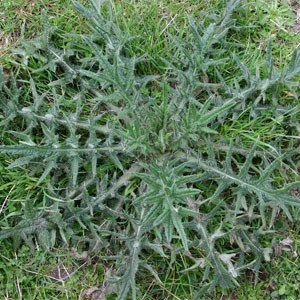
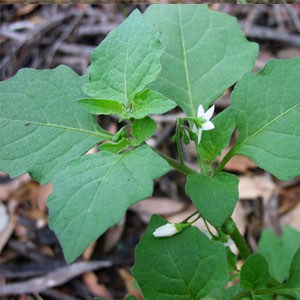
3. Black Thistle ‘Cirsium vulgare’
The black thistle, which is also known as Bull thistle, is a perennial weed that is identified by its spiny and sharp leaf, which grows in reddish-purple tinge or green. The weed also produces a collection of basal leaves that are dark green.
The weed also produces a flower that is located on the top of the stalk. The stems of the flower are heavy and hairy and branch out all the way on the top.
The average height of the plant is 1.5 m and is also known by a few other names such as the spear thistle and the Scotch thistle.
4. Blackberry Nightshade ‘Solanum nigrum L’
The blackberry nightshade only grows up to 1 meter in length and is a short-lived weed with leaves covering it. The leaves are lobed quite shallowly. The weed also produces white flowers, which usually grow in a cluster of either 4 or 12. All flowers have star like shapes and have five white petals. The weeds also produce blackberries, which should only be consumed when fully ripe. The round green fruit that the weed produces should never be eaten. While the blackberry nightshade is native to Eurasia, it has also become problem for garden owners across Sydney.
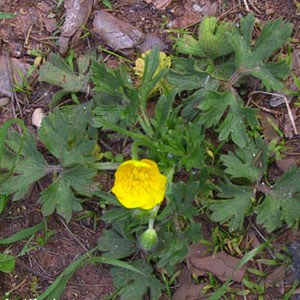

5. Boulbous Buttercup ‘Ranunculus bulbosus’
The bulbous buttercup weed takes its name from a unique perennial, bulb like stem that grows underground, just beneath the surface of the soil. The weed produces bright yellow flowers and when the flowers fully bloom; their sepals start to hunch towards the surface. The leaves situated in the lower parts of the flower are separated by three leaflets.
6. Buttercup Creeping ‘Ranunculus repens’
The creeping buttercup weed is grows low on the ground, and is a perennial species of the ranunculus bulbosus, which is native to Europe and has spread throughout North America and several different parts of the globe including Australia.
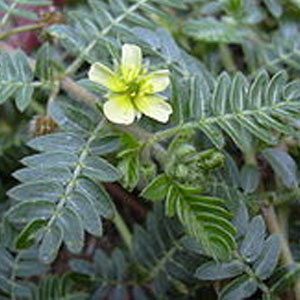
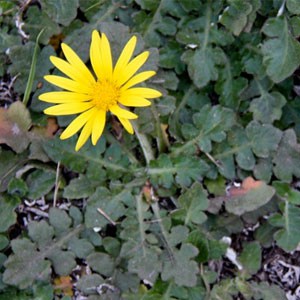
7. Caltrop ‘Tribulus terrestris’
Caltrop grows in the summers and is a weed that is quite prominently found throughout Western Australia. It commonly grows in areas where there is lots of spring and summer rain. It has been categorized as a pest weed in a plethora of shires throughout the metropolitan region of Perth. The seeds of Tribulus terrestris grow after lying dormant within the soil for about four or five years. After the summer rain, the seeds begin to germinate, which in turn causes the plants to grow predominantly, creating new burrs after a month or so.
The stems of the weed are wiry, long and fine hairs cover the stems. The stems have a taproot and lie on ground level.
8. Cape Weed ‘Arctotheca calendula’
Cape weed or Arctotheca calendula is another type of weed that starts blooming in autumn and fully blooms in winter. The weeds is stemless and produces a herb with extremely lobed leaves that are about 30 to 250 millimetres long and are engulfed with tiny white hairs, which produce a dense rosette. The weed produces daisy flowers (yellow petalled), which are 40 millimetres in diameter with a brown or a black centre. The flower appears in springtime and has 200 mm stalks.
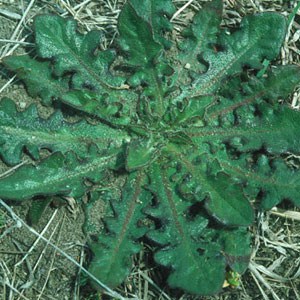
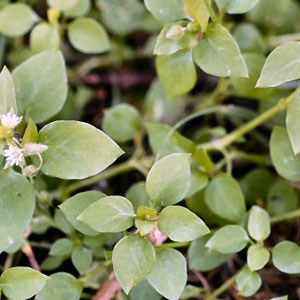
9. Cats Ear ‘Hypochoeris radicata’
The cat’s ear or Hypochoeris radicata is quite commonly confused by a majority of lawn/garden owners with dandelions. However, the appearance of the flower is so similar that people have begun referring to the cat’s ear as a false dandelion. The cat’s ear is pretty similar to a dandelion in terms of plant structure, plus it blooms in the same sort of habitat dandelions do, and is an absolute nightmare for lawn owners in Sydney, especially when it pops out of nowhere in manicured and fully serviced gardens.
The best way to identify a cat’s ear is through its sharply toothed leaves, which are also asymmetrical as compared to the leaves of dandelions.
10. Chickweed Common ‘Stellaria media’
Despite its name, the Stellaria media or common chickweed is quite commonly found in gardens and lawns across the Sydney region. Plus, the appearance of the plant varies significantly, but it usually has a sleek tap root and wildly emerging branching stems, which lie on the ground. The size of the leaves at the bottom has been roughly measured to be 3 mm to 20 mm in total length. They are oval and have long stalks. The size of the leaves at the top is roughly measured to be up to 25 mm and do not have that many stalks.

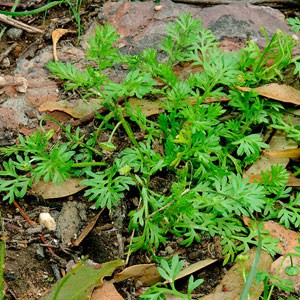
11. Chickweed Mouse Ear ‘Cerastium vulgatum’
A perennial weed, the Cerastium vulgatum or chickweed mouse ear, is native to Europe and has the quality of rapidly spreading in your lawn. Plus, when it starts to spread it also produces a dense mat on the garden, which helps it tolerate mild grass mowing. However, it has no resistance to particular herbicides. The leaves on the weed are dark green. They are tiny and seem a bit fleshy. On top of that, the leaves are also covered with small, oval-shaped hair.
The weed starts producing flowers during May to October. The flowers have 5 small and white petals and each petal has deep lobes. The chickweed mouse ear has the capability to successfully thrive and spread in almost all types of soils and can resist close mowing.
12. Cotula ‘Cotula australis’
Cotula australis is a perennial herb, which grows low on the ground and has leaves that are quiet similar to carrot tops. The flowers produced by the plant are button-shaped and have no petals. The flowers have slender stalks throughout autumn and spring. The weed mostly grows in grassy areas where the soil is moist. It can quickly invade your lawn as it stays moist all the time.


13. Dock ‘Rumex crispus’
The Rumex crispus or curly dock is a perennial herb and a broadleaf plan that commonly grows in moist or wet areas and usually spread as a direct result of overwatering your garden. The herb grows low on the ground and is native to the US. The dock mainly inhabits disturbed, wet areas as well as agricultural sites. The plant can be poisonous to livestock if eaten in large quantities.
14. Fat Hen ‘Chenopodium album’
A summer annual weed that commonly grows on cultivated regions or waste area, the fat-hen is native to Europe and can grow up to 1,250 feet. The weed also grows on sandy loams. However, it rarely grows on gravel and soil that is calcareous. But it frequently grows and spreads quickly on fertile soil and lands where there is a lot of manuring. Fat-hen has also been categorized as one of the most troublesome weeds and must be eliminated on sight before it disturbs everything in your garden.

15. Fleabane Flax Leaf ‘Conyza bonariensis’
The fleabane flax leaf or Conyza bonariensis is another weed with a particularly short lifespan. The weed first start to produce a basal rosette full of leaves and has upright branches that are full of hairs and can grow up to a meter in length. Its leaves are measured approximately around 4 to 10 centimetres and have elongated shape with lobed and blunt spikes.
Immediately Get Rid of all the Weeds before They Start to Germinate
The best time to evaluate your garden for weeds is early spring. You can use an herbicide (pre-emergent) just before spring in order to prevent the weeds from fully growing and spreading. It is better to hire the services of a professional gardener who has a precise idea of the best possible time to use the herbicide so it doesn’t affect the health of other plants or the grass. Spring brings a balance in moisture levels, and is an ideal season to eliminate weeds one by one if they look like they will still sprout. You can also handpick the weeds before the start to germinate, especially dandelions.
You can also resort to spot treating your lawn, which is an effective method for getting rid of broadleaf weeds, such as the dock (Rumex crispus) before they begin germinating. However, it is important to consider the type of herbicide you select because if you end up choosing the wrong one, you might also kill the grass and surrounding plants, which will result in the appearance of dead, brown patchy areas on the lawn.
Weed Identification – Protecting Your Favourite Plants
The aforementioned list of weeds that are found in the Sydney region can help you determine the type of weeds you are dealing with and to take all the necessary measures on the spot. Some of the most common types of weeds you should expect include:
- Bindii (Jo-Jo, Onehunga) ‘Soliva sessilis’
- Bindii Common ‘Soliva pterosperma’
- Black Thistle ‘Cirsium vulgare’
- Blackberry Nightshade ‘Solanum nigrum L’
- Chickweed Common ‘Stellaria media’
- Cape Weed ‘Arctotheca calendula’
- Buttercup Creeping ‘Ranunculus repens’
Controlling Poisonous Weeds
Professional weed control is an absolute must for your entire garden or lawn to steer clear of a full invasion of noxious or poisonous weeds. While a majority of weeds aren’t dangerous, some weeds can cause significant harm to your pets as well as your livestock if ingested in large quantities. The dock (Rumex crispus) for example, is a poisonous weed. You can also check for a list of poisonous/noxious weeds online, searching for weeds specifically found in the Sydney area.
Safety
Furthermore, whenever you decide to use herbicides, it is important to make sure that nobody comes in contact with the chemicals. Along with ensuring your valuable plant life is secure, if you have kids or pets, it is necessary to tell them not to be on the lawn/garden when you are dowsing the weeds with those chemicals. Keep everybody off the garden for at least the next 24 hours after you spray the weeds with the chemicals.
Moreover, if you attempt to spray the herbicides yourself, it is necessary to have the proper safety equipment on. For example, always wear gloves, a mask or goggles and the necessary clothing to avoid being adversely affected by the herbicides.
Conclusion
All in all, maintaining and manicuring your garden or lawn should always be the first step in eliminating weed growth and spread. It is hard for weeds to spread in a lawn that is regularly maintained, healthy and clean.
